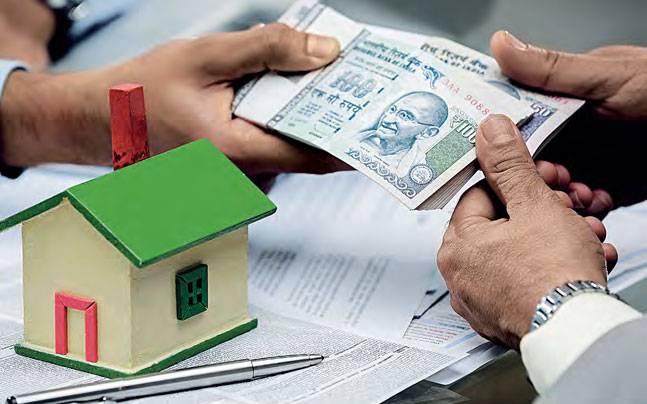8 Hidden Costs Your Home Loan Lender Could Be Keeping from You

Buying a property is probably one of the most expensive purchases you’d ever make. And with a surge in the property prices, it can be a difficult task to finance your purchase. In such a situation, taking financial aid from a good lending institution can aid you in your quest to buy your dream home.
However, when you apply for a Home Loan, down payment, housing loan interest charges, and EMIs won’t be the only charges you’d be paying once the loan is sanctioned. Let’s take a look at some of the common charges that your lender will keep from you when you approach them for a Home Loan.

Processing fee is the charge levied for processing your Home Loan application. Every bank and NBFC has its own processing fee. Depending on the lender, the processing fee can be a flat fee or can also be a percentage of the loan amount. The fee charged can range between 0.25 to 1% of the total loan amount. But, usually, it’s limited to Rs.50,000.
You need to pay this fee when you submit your application form and other necessary documents. Some lenders let you pay a part of this fee upfront during the application process, and you can clear the remaining amount before the disbursal process begins.
You need to remember that it’s a non-refundable charge that you’d have to endure in order to get your loan application processed. Even if your loan doesn’t get sanctioned, the processing fee remains non-refundable. If you have a good rapport with your lender or a great credit score, you can negotiate for a fee waiver or at least get the amount minimised.
Once you’ve submitted the application form and relevant documents, your lender would legally verify them. While some financial institutions have their own team of legal experts, some others hire agents to verify each document and technically inspect each term and condition. Most often, the legal charges are included along with the processing fees. But, some financial institutions might charge you separately for it.
If your property belongs to a housing project that has been previously approved by your lender, then this charge is generally waived. You can consult other property owners residing within your prospective housing complex, and apply for a loan in the same financial institution as theirs to get a fee waiver.
MODT or Memorandum Of Deposit of Title Deed is an undertaking you submit, acknowledging the deposit of title documents of the property to the lender under your own free will. Some lenders will ask you to register and get a stamp duty on the undertaking. In India, government stamp duty fee varies from state to state. But, the nominal charge usually ranges between 0.1%-0.2% of the Home Loan amount.
A mortgage deed charge is another fee you’d incur while availing a loan. It’s basically a document that pledges your property as a collateral for the loan. This deed would permit your lender to foreclose your property in case you fail to make EMI payments regularly.
If your lender charges you interest annually and not on a monthly basis, you might get overcharged. Sometimes the processing fees when not charged directly, might be included in your first EMI. Make sure that you discuss your installments prior to signing up for the loan.
When you come across a lump sum, due to reasons like receiving a bonus, or getting great returns from your investment, you can use this amount to pre-pay your loan. Prepayment is paying off the loan either partly or completely before the expiry of the loan tenure. This fee is implied to cover for the loss of interest payment faced by the lender. The charge differs from lender to lender and also depends on the kind of scheme you go in for.
According to the recent Reserve Bank of India norms, there’s no prepayment charge levied on a loan that has a floating rate of interest. But if you have taken a loan that has a fixed rate of interest, you can be charged with a prepayment penalty. Most often, the penalty is 2% of the prepaid amount.
Sticking to your EMI due dates is essential to avoid defaulting on your payments and hampering your credit score. Most of the banks and NBFCs charge a penalty every time you skip an EMI due date. Depending upon the financial institution, you could be charged with a penalty of Rs.200 to Rs.500 along with 2% of the interest of the loan.
If you want to opt for a balance transfer to another bank that’s offering you a better rate of interest, you’ll have to cough up some money as a penalty. While the charges for balance loan transfer vary from one lender to another, the average charge is usually 2% of the outstanding loan amount. If you don’t want to pay this fees, you can opt for a different loan plan in your current bank or NBFC. By switching from fixed to floating rate of interest, you can bring down either the EMIs or the tenure of your loan.
Your lender can charge you with document retrieval fees when you’re closing your loan account. The charge is levied to cover the cost of bringing back the original documents from the central government’s repository. The lender keeps half of the documents in the safe custody of the central government and the other half with them. This charge may or may not be levied depending on your lender’s policy.
Buying a property with a Home Loan comes with these charges and you can do little to avoid them. However, before you get a Home Loan, calculate Home Loan EMI, eligibility, and repaying capability using an online calculator. This way, you’ll have a clear idea of your loan amount and will be protected from unforeseen or hidden charges.
